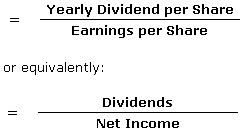Mr Edmund Cheng is the Chairman of the Board of Directors of Mapletree Investments Pte Ltd (MIPL). He is also the Chairman of its Executive Resource and Compensation Committee and Investment Committee.
Mr Cheng is concurrently the Deputy Chairman of Wing Tai Holdings Limited, Chairman of SATS Ltd (both listed on the Singapore Exchange) and Executive Director of Wing Tai Malaysia Berhad (a company listed on Bursa Malaysia).
Apart from his wealth of experience as a property developer, Mr Cheng is actively involved in the public and private sectors. He is the immediate past Chairman of the National Arts Council where he was involved in national efforts to promote and develop an arts landscape that will enhance vibrancy in the economy and society (2005 – 2013). Mr Cheng previously served as Chairman of the Singapore Tourism Board (1993 – 2001), The Old Parliament House Limited (2002 – 2006), The Esplanade Co. Ltd (2003 – 2005), and as Founding Chairman of Design Singapore Council (2003 – 2008) and a member on the Board of Trustees of Nanyang Technological University (2007 – 2012). He also served on the Boards of the Urban Redevelopment Authority (1991 – 1994), the Construction Industry Development Board (1992 – 1994) and Singapore Airlines Limited (1996 – 2004). A past President of the Real Estate Developers’ Association of Singapore (REDAS), Mr Cheng remains a member of its Presidential Council.
Mr Cheng was awarded The Public Service Star (BAR) in 2010 and The Public Service Star (BBM) in 1999 by the Singapore Government for his significant contributions. He also received the Outstanding Contribution to Tourism Award from the President of Singapore in 2002. In 2009, he was conferred “Officier de l’Ordre des Arts et des Lettres” by the Government of the Republic of France.
http://www.mapletree.com.sg/Our-Company/Leadership/BOD.aspx











